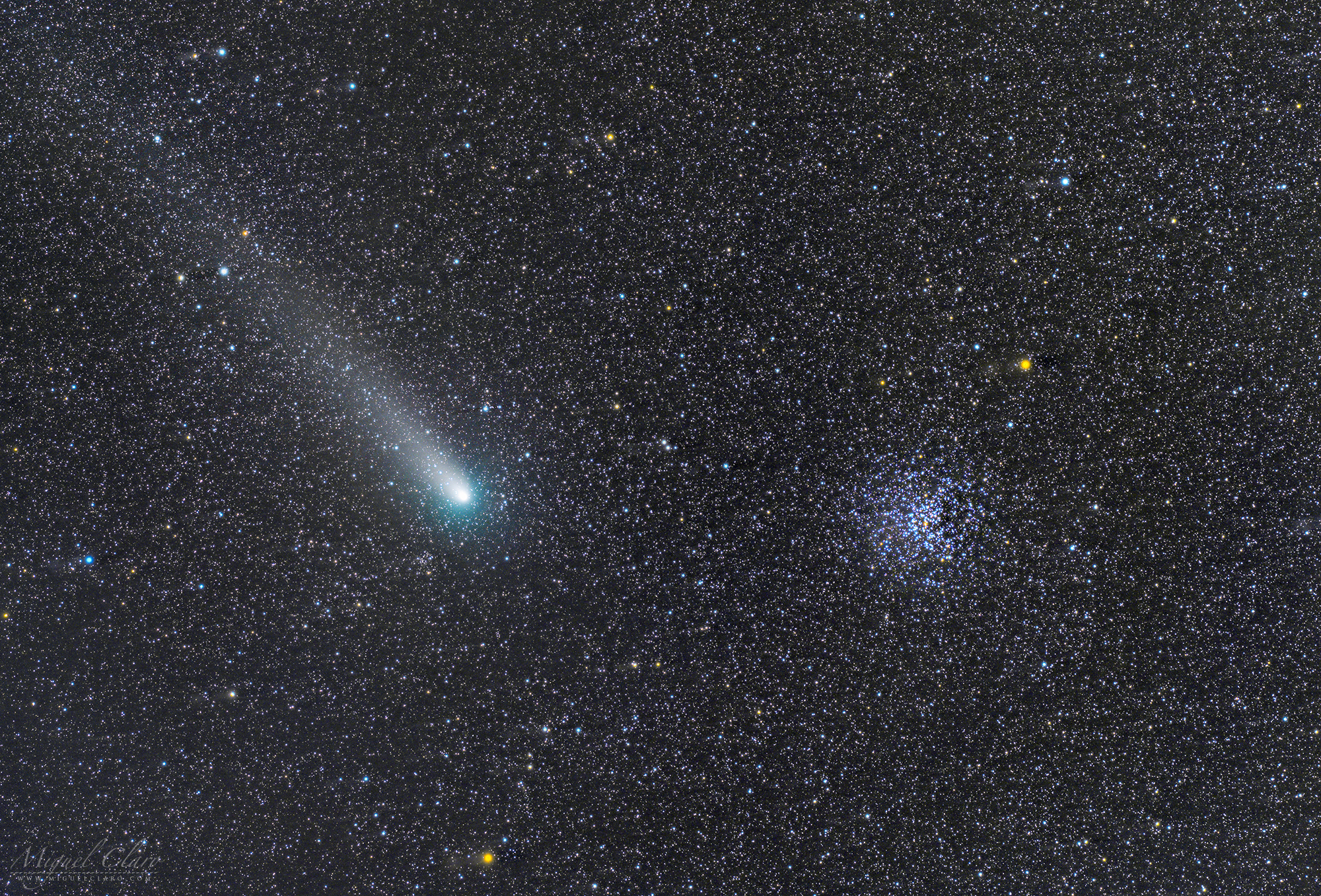Comet 21P Crosses Paths with a Star Cluster in Sparkling Deep-Space Image

Miguel Claro is a professional photographer, author and science communicator based in Lisbon, Portugal, who creates spectacular images of the night sky. As a European Southern Observatory photo ambassador, a member of The World At Night and the official astrophotographer of the Dark Sky Alqueva Reserve, he specializes in astronomical "skyscapes" that connect Earth and the night sky. Join Miguel here as he takes us through his photograph "Comet 21p/Giacobini-Zinner Approaching Open Cluster M37."
In this deep-space photo, the bright-green Comet 21P/Giacobini-Zinner blazes across a sparkling star field, passing by the open star cluster M37 as it makes its way through the Auriga constellation.
Comet 21P/Giacobini-Zinner reached perihelion, or the point in its orbit at which the object is closest to the sun, on Sept. 10, 2018. A periodic comet, Giacobini-Zinner orbits the sun about once every 6.6 years. This time around, it came closer to Earth than it has in the last 72 years, passing by at a safe distance of about 37 million miles (59 million kilometers) just a few minutes before it passed perihelion. During the approach, the comet shone like a seventh-magnitude star, remaining barely too faint to see without binoculars or a telescope.
In this close-up view, the comet is approximately 1 degree from the colorful open star cluster M37 (short for Messier 37). The brightest star cluster in the constellation Auriga, M37 shines with an apparent magnitude of 6.2 and is located approximately 4,500 light-years from our solar system. In the video below, you can watch the comet's motion across the night sky on Sept. 14, 2019, when the object headed back out toward the outskirts of the solar system.
Related: Amazing Photos: The Comets 21P/Giacobini-Zinner and 46P/Wirtanen of 2018
Comet 21P/Giacobini-Zinner is the parent body of the Draconid meteor shower, an annual "shooting star" display that peaks around Oct. 8 every year. Draconid outbursts, or increased rates of meteor activity, tend to occur in years near the comet's close approach to the sun. Although forecasters did not expect to see an outburst in 2018, skywatchers were pleasantly surprised to see one, with more than 100 meteors occurring per hour during the meteor shower's peak, according to the International Meteor Organization.
This image was captured from the Cumeada Observatory — headquarters of the Dark Sky Alqueva Reserve in Portugal — using a Takahashi FSQ-106ED refractor telescope, an EM-200 auto-guided mount and a Nikon D810a DSLR astrophotography camera. The picture combines 25 exposures of 160 seconds each.
Get the Space.com Newsletter
Breaking space news, the latest updates on rocket launches, skywatching events and more!
Editor's note: If you captured an amazing astronomy photo and would like to share it with Space.com for a story or gallery, send images and comments to spacephotos@space.com.
- Photos: Spectacular Comet Views from Earth and Space
- A Comet, Meteor, Nebula and the Pleiades Combine into One Epic Space Photo
- Comet and the Pleiades Meet Up in Meteor Shower in This Fantastic Photo
To see more of Claro's amazing astrophotography, visit his website: www.miguelclaro.com. Follow us @Spacedotcom and on Facebook.
Join our Space Forums to keep talking space on the latest missions, night sky and more! And if you have a news tip, correction or comment, let us know at: community@space.com.









